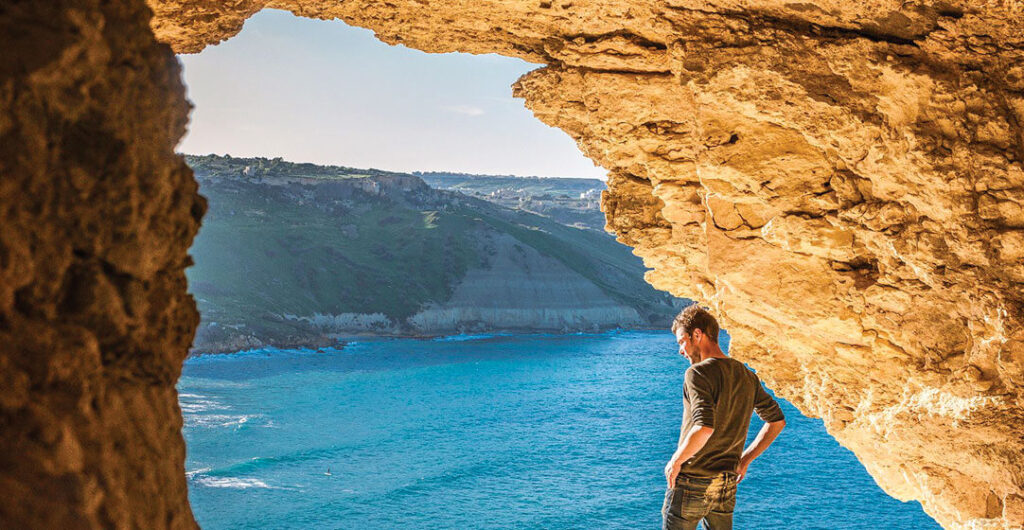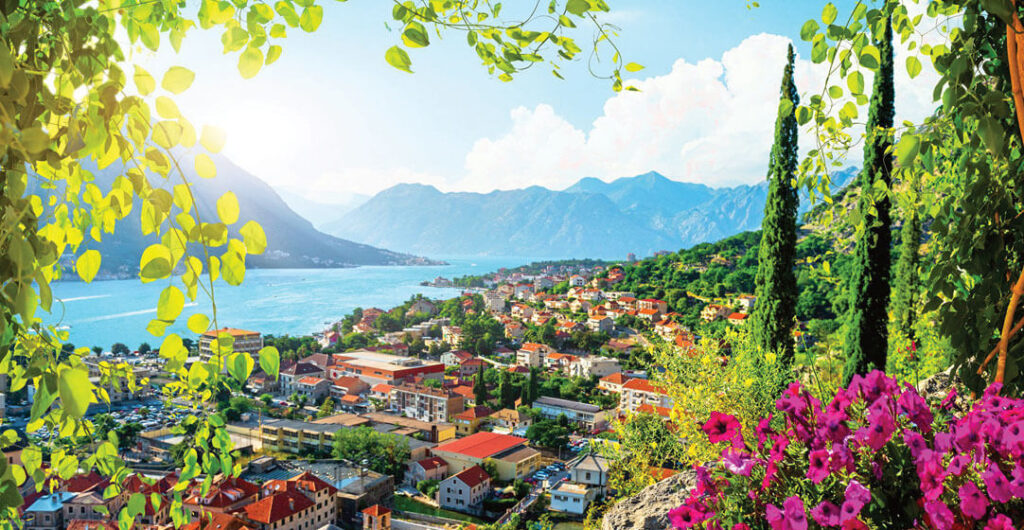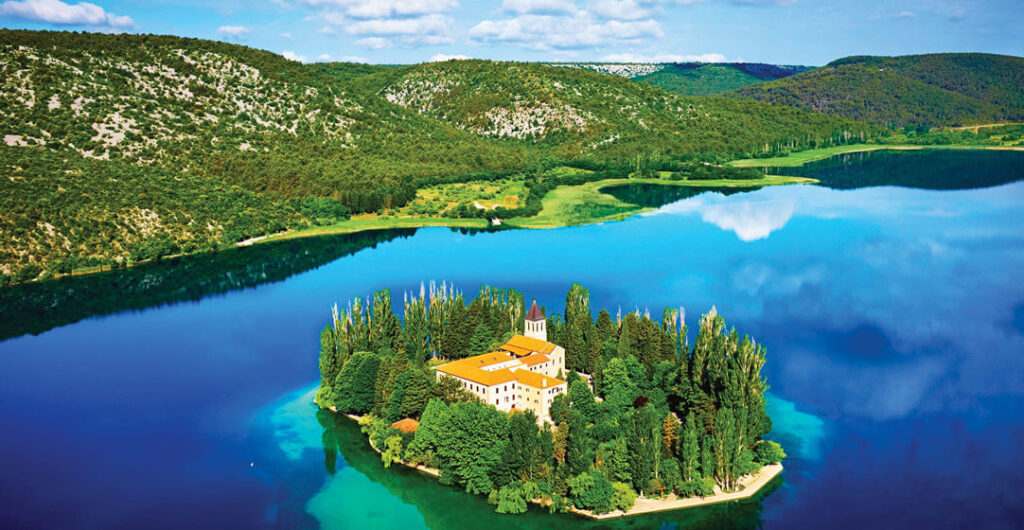Explore Beautiful Coasts, Turquoise Waters and Ancient Cities
There’s one thing that I particularly love about cruises: I can shape the trip structure according to my parameters. On an 11-day journey across some of the Mediterranean’s finest waters, I took full advantage of a new experience in Southeast Europe.
My cruise ship left from the Grand Harbor of Valletta, Malta, and made its way through the Ionian Sea up to the Adriatic Sea, stopping at various ports along the western coast of Montenegro and Croatia. The cities en route are some of Southeast Europe’s most historic waterfront sites and offer plenty of surprises — from local delicacies to quick dips in the sea.

Malta
From its days under Arab rule — where the country’s Semitic language originated — to the 250-year leadership of the Knights of St. John, a Catholic military order known for its eight-pointed cross (now an iconic Maltese symbol), Malta has an incredibly varied history.
This storied archipelago is made up of seven islands, three of which are inhabited. The largest of them is Malta, a sun-baked place of honey-colored limestone and flat-roofed homes, ideal for catching rainwater in a land where water is scarce. This is one reason why the surrounding sea is so beguiling. Traditional luzzu fishing boats brightly painted in shades of red, yellow, green and blue dot its turquoise waters, which are home to colorful sea life, including squid, damselfish and sea bream — a diver’s delight.
Back on land, prickly pear sport neon fruits from their flat cacti stems, while indigenous grape varieties like girgentina and gellewza grow generously in the vineyards, awaiting their transformation into bottles of semi-sparkling wines. Dry-stone walls undulate along rolling hillsides, while coastal towns such as St. Julian’s, known for its thriving nightlife, and the idyllic fishing village of Marsaxlokk attract Maltese residents and travelers alike.
As the country’s buzzing capital, the walled city of Valletta is the heart of Malta: a grid-laid baroque wonder of narrow alleyways. Cafes and restaurants spill outward onto the streets, their tables teeming with patrons sipping pints of Cisk, the local lager beer, and dining on plates of ravjul Malti (Maltese ravioli). Each day at noon, Valletta’s Saluting Battery fires its gun over the city’s spectacular Grand Harbor as it has for centuries.

In fact, this ceremonial blast is one of the world’s oldest saluting batteries still in operation. The Order of St. John constructed the artillery, as it did the bulk of Valletta itself, including St. John’s Co-Cathedral, known for its impressive baroque frescoes, painted vaulted ceilings, and — tucked away in its oratory — Italian artist Caravaggio’s iconic painting, The Beheading of St. John the Baptist, believed to be his only work to bear his signature.
Across the Grand Harbor (and easily reachable by dgħajsa, a type of Maltese gondola) are The Three Cities of Malta: Vittoriosa (originally Birgu), Senglea and Cospicua. These wonderfully preserved villages are home to some of Malta’s most historic sites, including Fort St. Angelo, a bastioned fort that once served as the Order of St. John’s headquarters and was a main mode of Allied protection during World War II, when Malta’s role as a base for the British Royal Navy made the archipelago a substantial target. Along with its intriguing history, the fort also offers phenomenal panoramic views.
You can delve into thousands of years of Maltese and Mediterranean seafaring history at the Malta Maritime Museum, housed within the city’s Old Naval bakery. Among its 20,000 artifacts is a nearly 4-ton Roman anchor, one of the world’s largest.
Other island attractions include Malta’s ancient megalithic temple complexes like Ħaġar Qim and the nearby Mnajdra, limestone remnants that date back more than 5,000 years. There also are the island’s natural wonders, like the Blue Grotto, an enormous arch carved by winds and waves that’s home to brilliant blue sea, thanks to the way it catches sunlight. The narrow, cliff-protected cove of Wied iż-Żurrieq, a tiny fishing village with a 17th century watchtower that’s open to the public, has warm, calm waters perfectly suited for impromptu swimming.

Montenegro
Pulling into the port of Kotor, a picturesque coastal town in the most mountainous Balkan country, Montenegro, is worth an early morning wake. Patchy green limestone peaks line both sides of the 17-mile-long Bay of Kotor. The medieval city of Kotor’s red-roofed Old Town is a triangular shaped beauty of Romanesque, Byzantine and Gothic architecture and narrow streets.
A city wall rises from sea level to the fortress of San Giovanni, situated on a 915-foot-high hillside. The wall — which is illuminated in the evenings — makes for a great walk or, if you’re feeling energetic, a 1,350-step climb to the fortress, home to some spectacular Old Town views.
Croatia
Hailed for its sparkling Dalmatian Coast, a striking display of limestone cliffs, offshore islands and intriguing Old Towns, Croatia has some of the finest spots along the Adriatic for a spontaneous swim.
Dubrovnik
Dubrovnik is a walled 12th-century medieval masterpiece separated from the rest of Croatia’s coastline by a strip of Bosnia and Herzegovina. The Stradun, a pedestrian-only limestone-paved thoroughfare in Old Town, brims with rising alleyways and stone structures filled with cafes, shops and eateries. It’s also where you’ll find the 14th-century Franciscan Church and Monastery, home to a 700-year-old apothecary that’s one of the oldest working pharmacies on the planet.
A small museum displays original pharmacy tools and recipes, as well as valuable relics, paintings and jewelry. The Pile Gate, with its stone bridge, is Dubrovnik’s main entrance into Old Town. Old Town’s Gate of Ploče, the eastern side entrance, has the imposing Revelin Fortress by its side. It’s about an hour’s walk back to port and Dubrovnik’s more modern city section, highlighted by the cable-stayed Franjo Tuđman Bridge.

Split
Split’s Old Town is a maze of serpentine streets sporting shops stocked with locally made lavender soaps, olive oils and nautical bracelets, while the neighboring new town boasts a palm tree- and café-lined promenade that overlooks the Adriatic Sea.
Diocletian’s Palace, which Roman emperor Diocletian built as both a summer residence and military palace in the early fourth century A.D., serves as a central meeting point of sorts — one easily recognizable by its octagonal towers.
Climb to the top of Marjan Hill, a pine-forested nature preserve overlooking downtown Split, for unbeatable views of both the city and the Adriatic. At the top sits Teraca Vidilica, a superb place for lingering over servings of shrimp pâté and sipping glasses of plavac mali, a full-bodied Croatian red wine. Then make your way down through Split’s Veli Varos neighborhood, with its white stone houses and sloped, café-lined streets.
Zadar
Travelers looking to avoid the crowds of Croatia’s better-known cities head to Zadar, a seaside locale that’s also a great base for exploring national parks such as Paklenica and Plitvice Lakes, where ample hiking and breathtaking scenery — including Paklenica’s deep canyons and karst rock formations — are the norm. Zadar has a blend of Roman, Byzantine and Venetian architecture.
While historic features like the acoustically superb Church of St. Donatus are impressive, it’s Zadar’s modern art installations that make the city truly unique. Head to the Riva, Zadar’s seafront promenade, to hear a massive sea organ that turns water into music through dozens of underwater polyethylene pipes. Then catch the nearby Monument to the Sun, a circular display of 300 glass panels that absorb sunlight during the day and transform it into a waterfront light show each evening.

Sibenik
Sibenik is Croatia’s oldest native settlement. Another coastal city with a wonderfully preserved Old Town of cobblestone streets and impressive red-roofed, stone structures, it’s home to two UNESCO sites — including the Cathedral of St. James, a masterpiece of Gothic and Renaissance architecture — as well as the gateway to hundreds of islands ideal for day-tripping.
Just off the mainland coast, the imposing 16th-century St. Nicholas Fortress is a remnant of the region’s Venetian rule, while the waterfalls of nearby Krka National Park showcase greater Sibenik’s natural side. You can also spend the afternoon soaking in the waters of the Adriatic with a visit to Sibenik’s public Banj Beach. It’s not on any itinerary, but it’s well worth a dip.
Gozo
Gozo is Malta’s second-largest island, a more slow-going place of idyllic sea caves and rural hillsides. Like Malta, Gozo is dappled with the archeological remains of megalithic temples, including the UNESCO-listed Ġgantija, a more than 5,500-year-old limestone temple complex that encompasses some of the world’s oldest freestanding man-made structures. Gozo’s red sand beach Ramla l-Ħamra sits on a curving cliff-lined bay, its clear blue waters calling to sea lovers like me.
—Written by Laura Kiniry
—Top photo of Dubrovnic by Stratum cge2010/AdobeStock
This article appears in the Winter 2023 edition of AAA Washington’s member magazine, Journey.
Laura Kiniry is a freelance travel journalist based in San Francisco. She just visited her seventh continent — by cruise.

Travel Planning Tips
Get expert advice: Your perfect getaway awaits. No matter what destination you choose, or how you wish to travel, AAA Travel experts can help you plan a perfect experience that you will remember for years to come.
Purchase travel insurance: Protect your trip investment with travel insurance.
Consider Concierge: AAA’s Concierge Vacations feature done-for-you details and special amenities for travel to world-wide destinations. AAA Travel Agents will make your planning a breeze and your vacation unforgettable.
On the road: Get ready for every trip with a AAA Membership. Get peace-of-mind on the road and much more.
Save with discounts: AAA membership gives you access to exclusive discounts nationwide.









